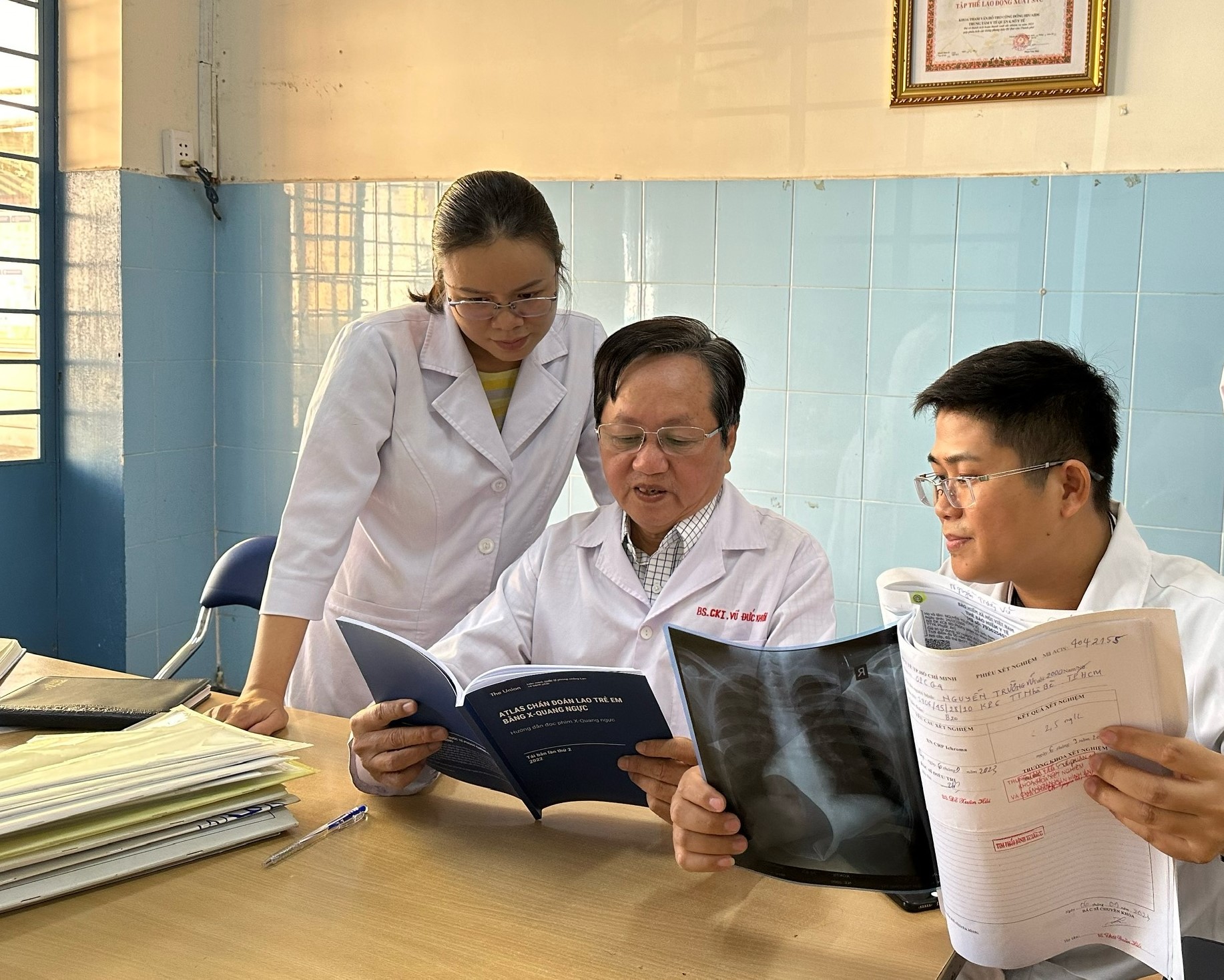To support healthcare workers in Vietnam to diagnose and care for children with tuberculosis (TB), The Union’s Diagnostic CXR Atlas for Tuberculosis in Children: A Guide to Chest X-ray Interpretation (the Atlas) has been translated into Vietnamese.
The Atlas was developed to assist healthcare workers in high TB-burden settings to interpret chest x-rays (CXRs) from children investigated for TB. It presents numerous CXR images with detailed annotations and summarises key messages to enhance its reader-friendliness.
In 2022, 172,000 people fell ill with TB in Vietnam, and there 102,479 new and relapse case notifications.
Dr Nguyen Duc Khoi, the radiologist who translated the Atlas into Vietnamese, said: “There were 1,176 children TB cases detected in Vietnam in 2023. This number is much smaller than previously estimated. Vietnam is one of the countries with a heavy TB burden.
“This book is important to TB prevention initiatives in Vietnam. As one member of the compiling committee for the national guidelines for TB diagnosis and prevention in 2023, I incorporated the updates on diagnosis imaging about children TB from the Atlas in the national guidelines.”

The U.S. Centers for Disease Control and Prevention (CDC) provided financial and technical support to the Vietnamese translation of the Atlas.
Dr Van-Anh Ho, Vietnam Senior TB/HIV Advisor at CDC, said: “The diagnosis of TB among children is challenging and sometimes neglected. Using chest x-ray to screen for TB among children has been shown to be an effective tool; however, the capacity to read chest x-ray remains a challenge to both clinicians and radiologists. The Union's Diagnostic CXR Atlas for TB in Children is a very helpful and practical tool for healthcare providers. Translation into other languages means it can be disseminated more widely. I am glad that the second edition of this document, released in 2022, has been translated into Vietnamese, with timely support from the US CDC. It has been well received among Vietnamese clinicians as well as national TB program managers and technical staff.”
This project is supported by the U.S. Centers for Disease Control and Prevention (CDC) under the terms of cooperative agreement number NU2GGH002222.
